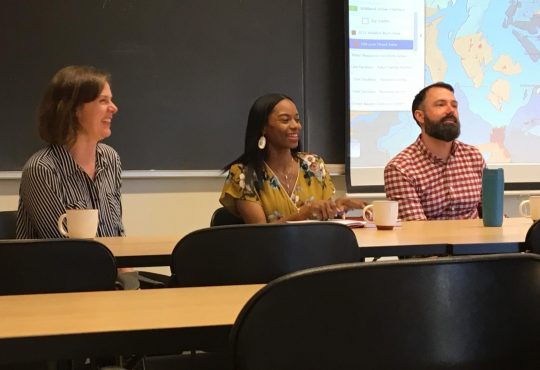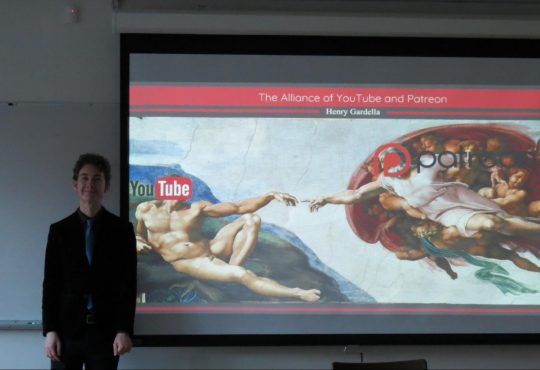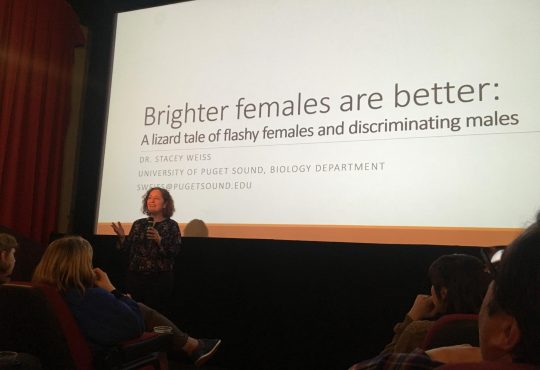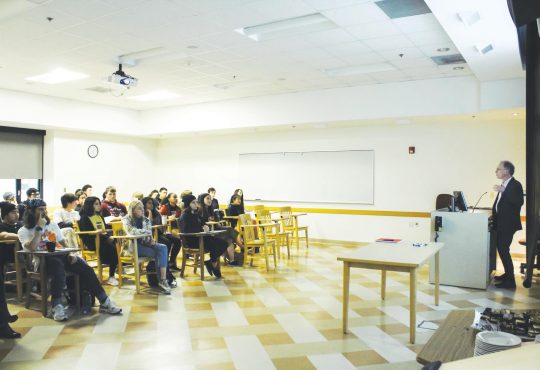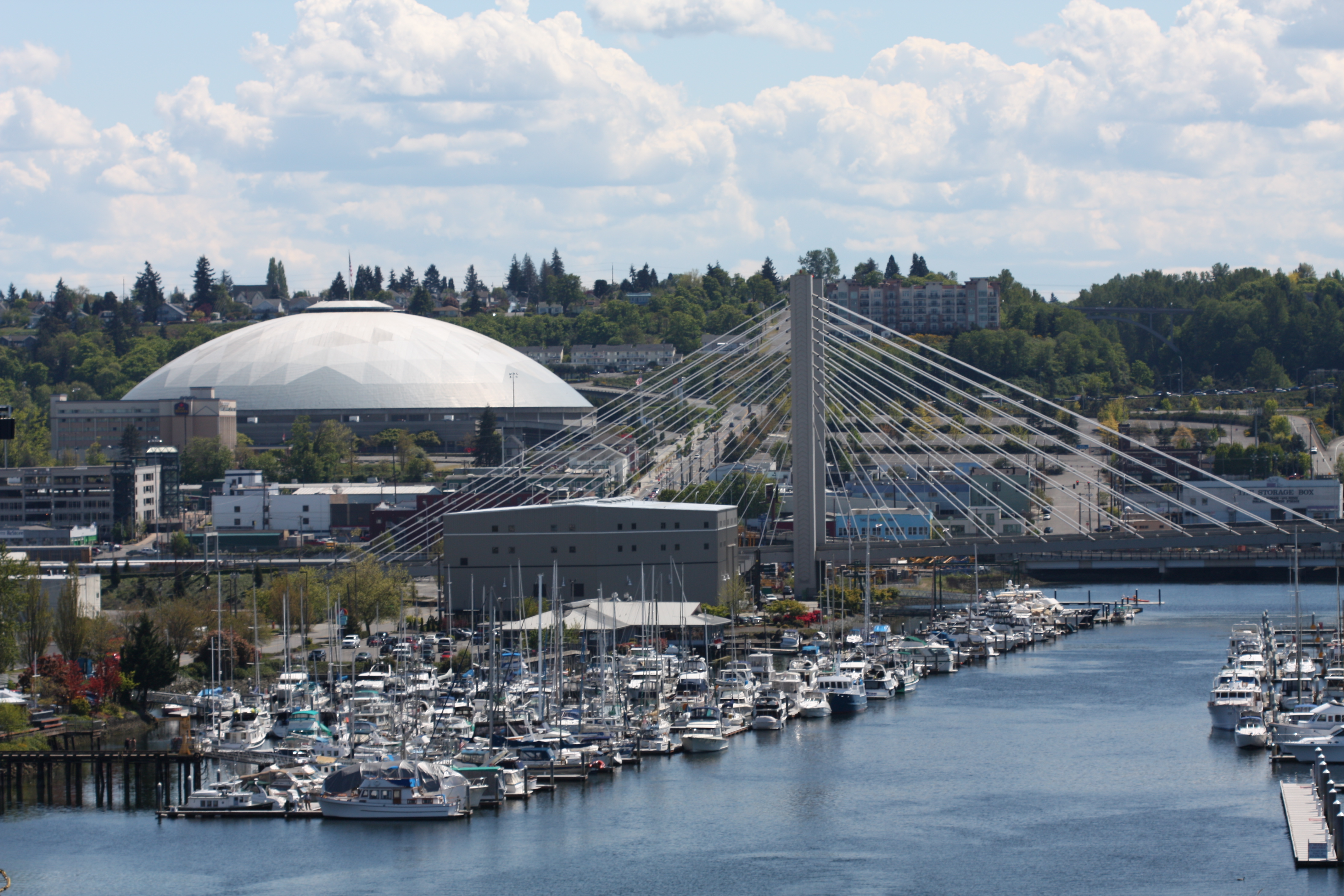
On Thursday, Feb. 7 at the Tacoma Art Museum, two professionals from seemingly opposing fields combined their expertise to bring awareness to environmental issues in a new and accessible way. Seattle-based artist Mary Coss and estuarine ecologist Roger Fuller presented their collaborative work, “Silent Salinity – After the Dig,” drawing attention to human beings’ relationship with the environment.
Fuller works with the Skagit Climate Science Consortium, a nonprofit organization that tracks glacial and estuary patterns in the Skagit basin. Along with important scientific research, the group’s mission is to heighten awareness of climate change and help the state and public address and heal negative environmental impacts.
Fuller knew he had to get creative in order to instill the importance of glacial and estuary health for the local environment. Fuller and the Museum of Northwest Art, located in the heart of Washington State’s estuary in La Conner, came up with a plan.
“We started this art show about climate change impact on the local ecosystem and the idea was to engage artists and scientists together in a conversation about the science and then the artists would express that,” Fuller said at Thursday evening’s talk.
Through this art show, Fuller came into contact with Mary Coss, a local artist whose passion brought “Silent Salinity – After the Dig” to fruition.
“The idea of working with a scientist where I could actually brainstorm together and be inspired by the raw science was so intriguing to me,” Coss said.
After speaking with Fuller about the rising salinity levels in the local estuary, Coss was inspired to create a series of visually and emotionally impactful artworks. Coss, who works in metaphor, wanted to find a way to communicate to the public the importance of reversing this salinity.
“I was playing with this idea of what would happen if this continues and we don’t do anything to stop this. What happens eventually if all of the water becomes saline?” Coss asked.
Coss imagined a world completely overtaken by salt. She encased household items in salt, making their once-familiar forms look foreign and ancient. In one piece, “What Remains,” featured in the talk, objects encased in salt such as a typewriter, fan and a suitcase blend into one mass of white.
“Artists are great at communicating to the entire person, to the whole person, so communicating at a gut level through imagery, through touch, through you know, all kinds of different mediums,” Fuller said.
Coss’s artwork certainly provokes a gut reaction. The dystopian future she creates within her salt-encrusted pieces reminds us that climate change is something that will impact us all sooner or later.
“When you talk about global warming and you talk about ocean rise, it’s in such little pieces that people don’t really think about or understand the impact of what eventually will happen if it isn’t turned around,” Coss said.
Coss’s goal is to touch the emotional side of our understanding of climate change and what it means for the individual. For a scientist like Fuller, a personal and emotional understanding of climate change is difficult. Coss had Fuller write about the way he felt about climate change rather than focus on raw data and fact as science requires.
“I had asked him to write a journal entry that spoke to the science, but talked about it in a personal way, like, ‘How would you tell this story to your grandchild,’ and he wrote this very poetic journal entry,” Coss said.
Coss used this journal entry to create one of her largest pieces, “Net Loss.” She took Fuller’s words and shaped them out of wire, then she strung them together into a large fishing net shape and encased the entire piece in salt. The result was not only aesthetically pleasing, but full of readable words like “gone” and “change” which gives the audience a tangible way to feel about climate change.
Coss and Fuller proved that art and science can live symbiotically. Science can give us hard facts, but art can tell us why we care and inspire us to make a change. It is through these community initiatives and the dedication of the people running them that reversing the impact of climate change could become a reality.
Coss’s work is on display at 950 Gallery in Tacoma until Feb. 21.

